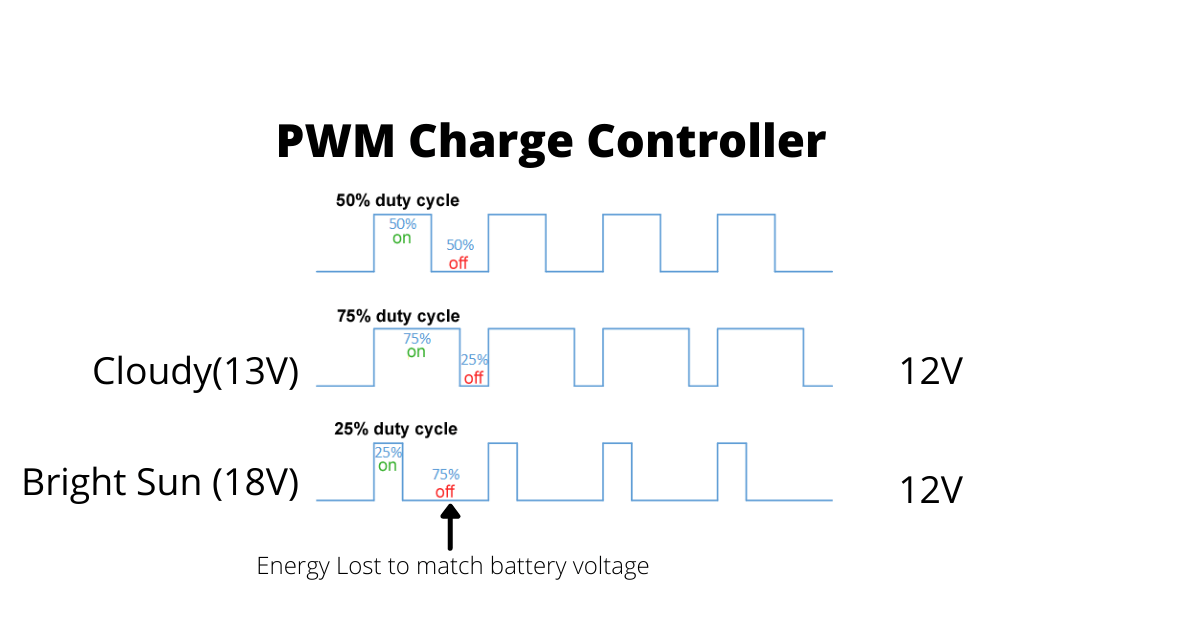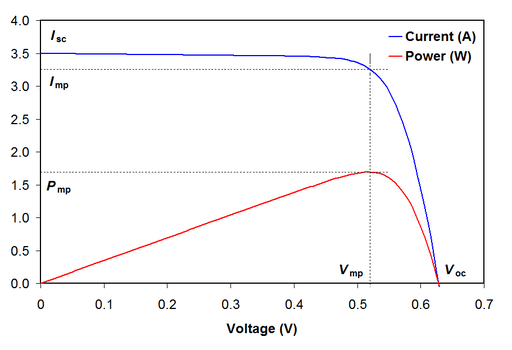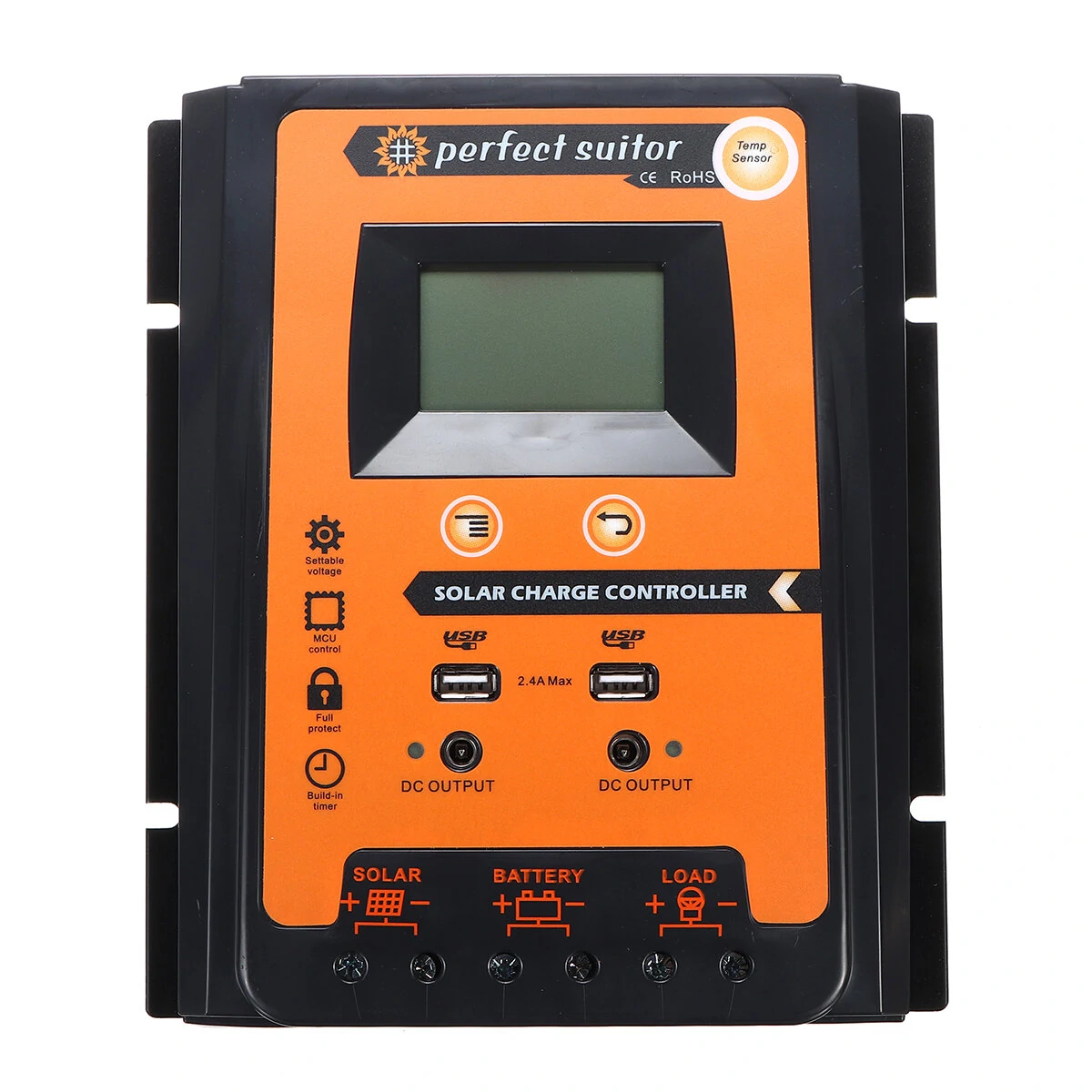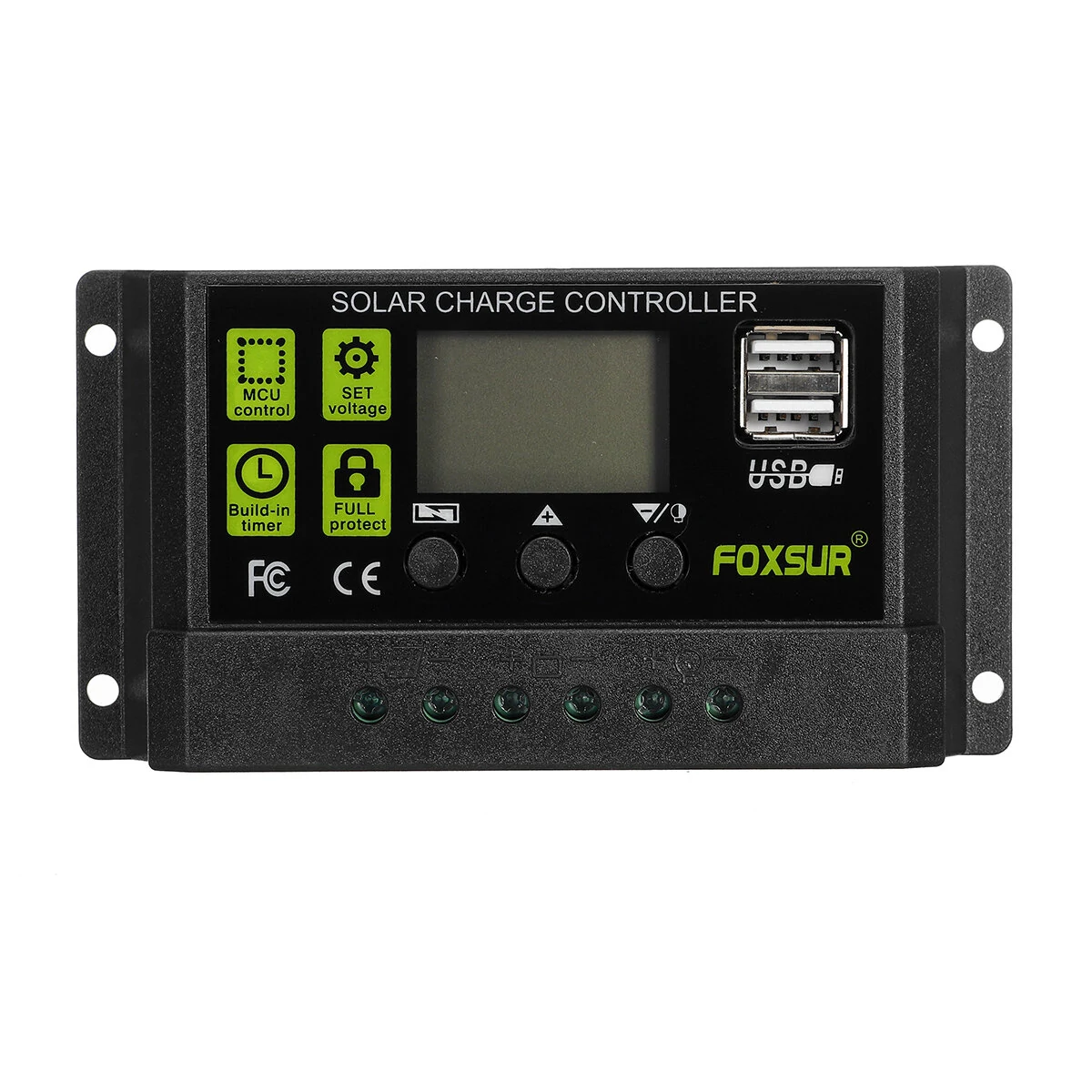There are two types of Solar Charge Controllers existing in the market. They are PWM Charge Controller and MPPT Charge Controllers. In the olden days, we don’t even have a control circuit to disconnect automatically when the battery was fully charged. Later on Float Charge, Trickle Charge technologies are popular in charging lead-acid batteries.
In today’s world, after the microcontrollers are entered, we can easily monitor and calculate the voltage, current, watts and then select the charging modes more efficiently to improve the battery life. Our Engineers and Scientists always continuously improving the existing technologies towards Fast Charging, High Performance, Long Cycle Life of Batteries, etc. There is no end to innovation. But today, we are going to see about the most efficient Solar Charge Controllers PWM vs MPPT.
What is a PWM Charge Controller?
PWM Charge Controllers work under the principle of Pulse Width Modulation. It means, the controller limits the charging voltage to match the battery voltage by faster ON and OFF switching at a high frequency. But when the voltage in the solar panel drops below the charging voltage, it cuts OFF the charging. This is a drawback as even we have small sunshine, we won’t be able to charge our batteries. So we lose much power with this setup. But this option is a very cheaper option when considering the cost. It is suitable for simple backup power solutions.

Pros:
- Cheaper and Cost Effective
- Suitable for Small Solar Array Setup with shorter distance.
- Suitable for backup power systems and good sunny places.
- As Solar panels connected in parallel, it doesn’t get affected by shade.
Cons:
- The panel voltage should match the battery voltage, when upgrading, we will be connecting more panels in parallel (voltage same in parallel). But connecting parallel adds up the current, we need a higher gauge wires to match the current from panels.
- Efficiency is less. More power lost during cloudy time.
- Higher Charging Time
- Upgrading costs higher.
Few examples of PWM Charge Controllers in Market:
What are MPPT Charge Controllers?
MPPT Charge controllers are called Maximum Power Point Tracking. What it does is, monitor the input voltage, current from the panel and check for maximum watts it can achieve using a microcontroller. The major difference compared to PWM is the panel voltage doesn’t need to be the same as battery voltage.
Constantly maintain the Battery Charge Voltage with change in charge current only:
The MPPT Charge controller produces maximum power from the panel and then optimizes the voltage to the battery voltage (Here current is increased or decreased based on sunlight condition). We need to note, the input solar voltage can be any voltage (up to peak supported), so we can connect solar panels in series to the accepted range of the MPPT Charge Controller. Hence the charging voltage will never be below the battery voltage.
Eg. We have a series of solar panels that can make 60V input to MPPT on a sunny day. The battery charging voltage is 13 Volts. The MPPT Converts the voltage into a higher current at 13 Volt, 3 Amps.
On Cloudy Day: When it is 50% Cloudy, we get 30Volt on our panels, which is still higher than the charging voltage of our battery. The only thing is the charging current will be less (but not completely cut off charging like PWM during shade). So MPPT is going to charge as much as possible in cloudy conditions too.
Pros:
- Highly efficient charges even at cloudy times.
- Upgrading Solar panels is easy without additional costs
- Cost of wire is saved.
Cons:
- Expensive than PWM Charge Controller
- Considerably Heavy and Bulky because of Inductors and Power Diodes
- As MPPT is connected in series, if one panel is broken or failed, it entirely stops energy collection.
The graph given below shows the curve for maximum power it can reach. In this we can see, even at the lower voltage, the current remains the same until it reaches maximum power. The MPPT Charge controller tries to provide maximum power by keeping the battery voltage.
Voltage (V) x Current (I) = Power (Watts)
In the below graph, the current stays constant even at less voltage. Pmp is the maximum power it can attain using the formula (V*I = Watts). After reaching its maximum voltage, the current and voltage drop to stay at the maximum charging voltage of the battery. These are sensed by current and voltage sensors and calculate these values with a microcontroller inside the MPPT. It will then control the Buck-Boost Control circuit to attain efficient results.

Difference Between PWM and MPPT
| PWM | MPPT |
|---|---|
| Solar Panel (PV) Voltage and battery voltage should match. | Solar Panel (PV) Voltage can be higher than the battery voltage. |
| Cheaper and Cost-Effective. | Higher initial cost but it is worth the investment. |
| Suitable for simple and short-distance solar setup. | Suitable for short and little longer distances from the panel to the controller. |
| Suitable for backup power systems and nice sunny regions. | Suitable for Cloudy Areas and Vehicle Roof Solar Setup or setup higher than 150 Watts. |
| Slower Charging / No Charging when the voltage dropped below charging voltage. | Faster and Efficient Charging |
| Panels connected in parallel to match the battery voltage. | Solar Panels connected in the Series compensate for the voltage. |
MPPT vs PWM Which is better?
MPPT is best for a large solar energy system to utilize its maximum efficiency. If you are at a plan of extending your setup in the future, MPPT is the best option. The deciding factors in choosing between these two are installation area, site conditions, array, and load size, and the budget.
Few examples of MPPT Charge Controllers in Market:
Personal Recommendation for MPPT Charge Controller:
EPEVER, Victron and SmartenPrime MPPT Charge controllers are the most popular MPPT Charge controllers. However, if you are in India SmartenPrime is the best option. Because the other 2 international MPPT Charge controllers are costlier in India due to import duties and taxes. Most of the time it is not available in stock.
The Smarten prime+ has additional features that are not available in Epever and Victron. Smarten Prime has the feature to upgrade your legacy inverter to a hybrid inverter. The inverter has the settings to choose between Solar or AC Power supply based on the battery level. Once you set the battery threshold to charge using AC Supply. The inverter switches between both based on availability.















